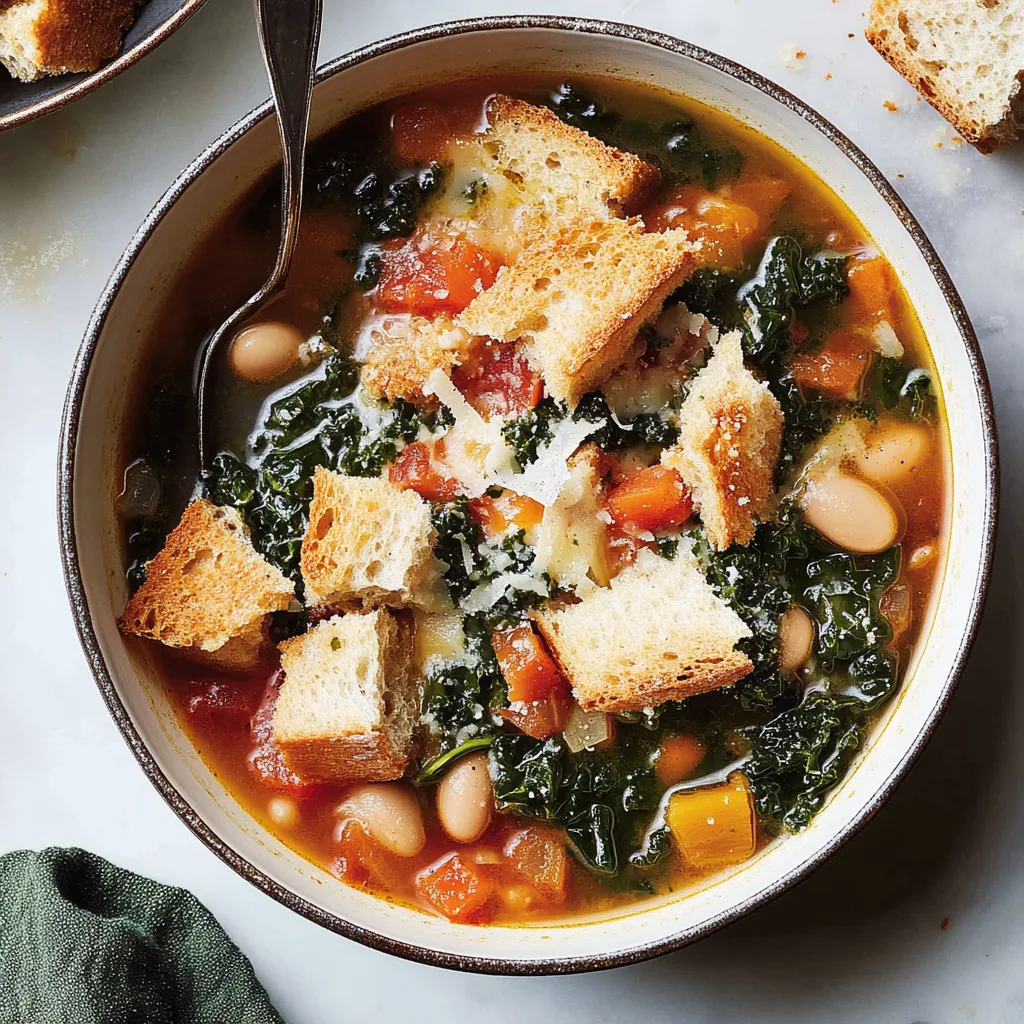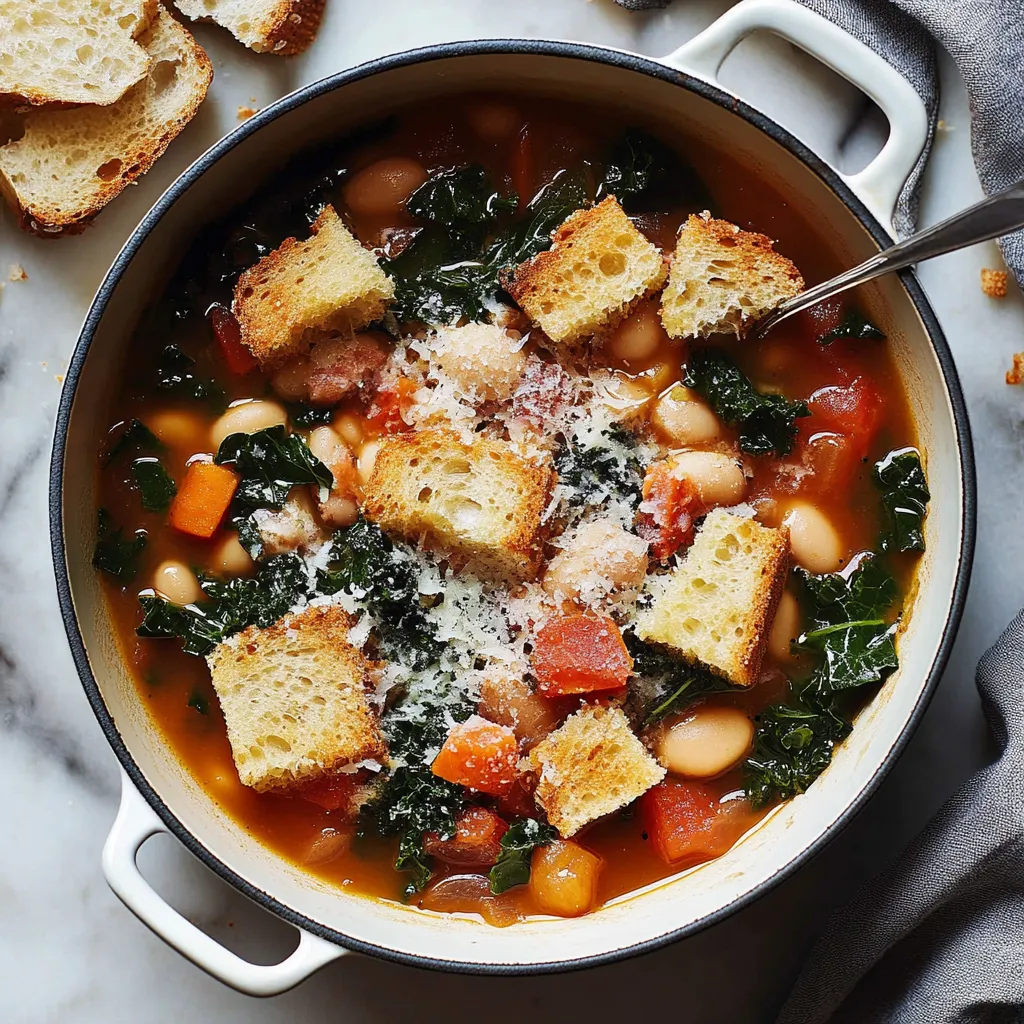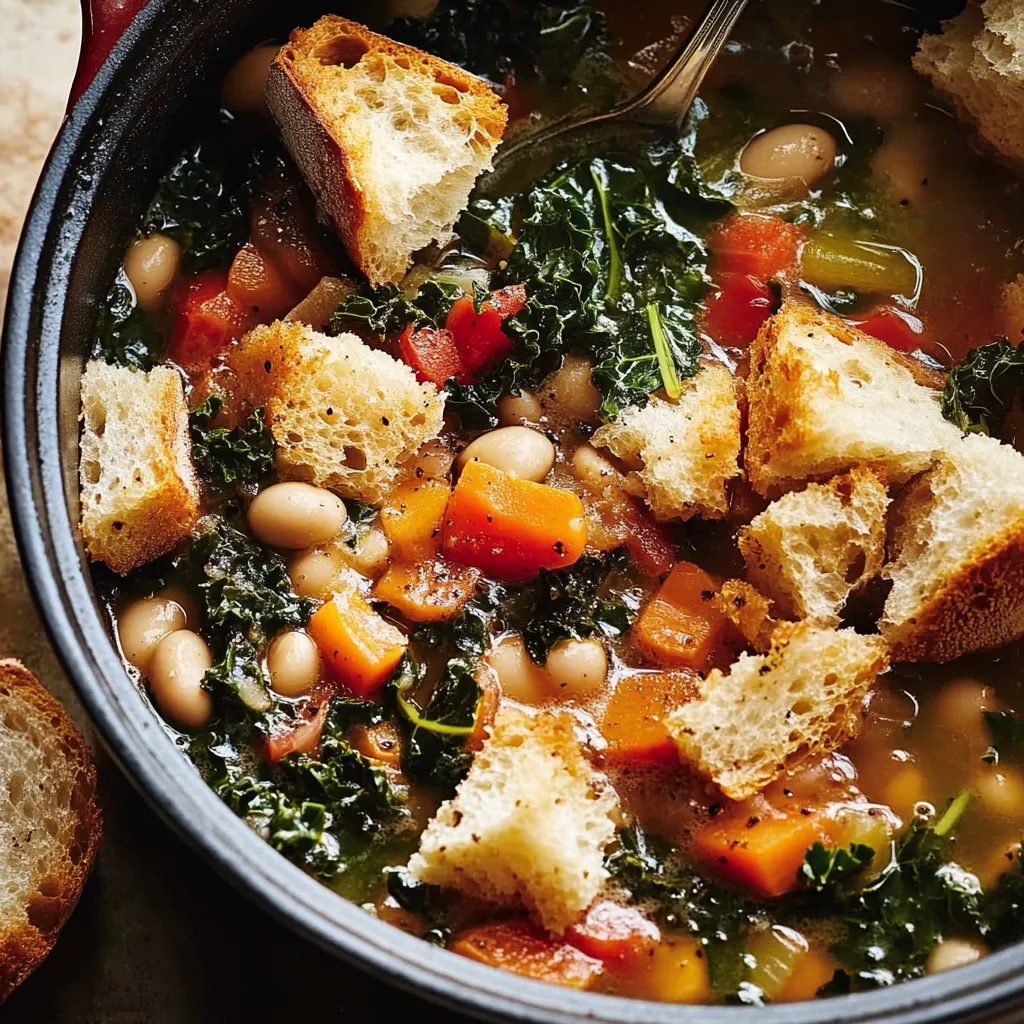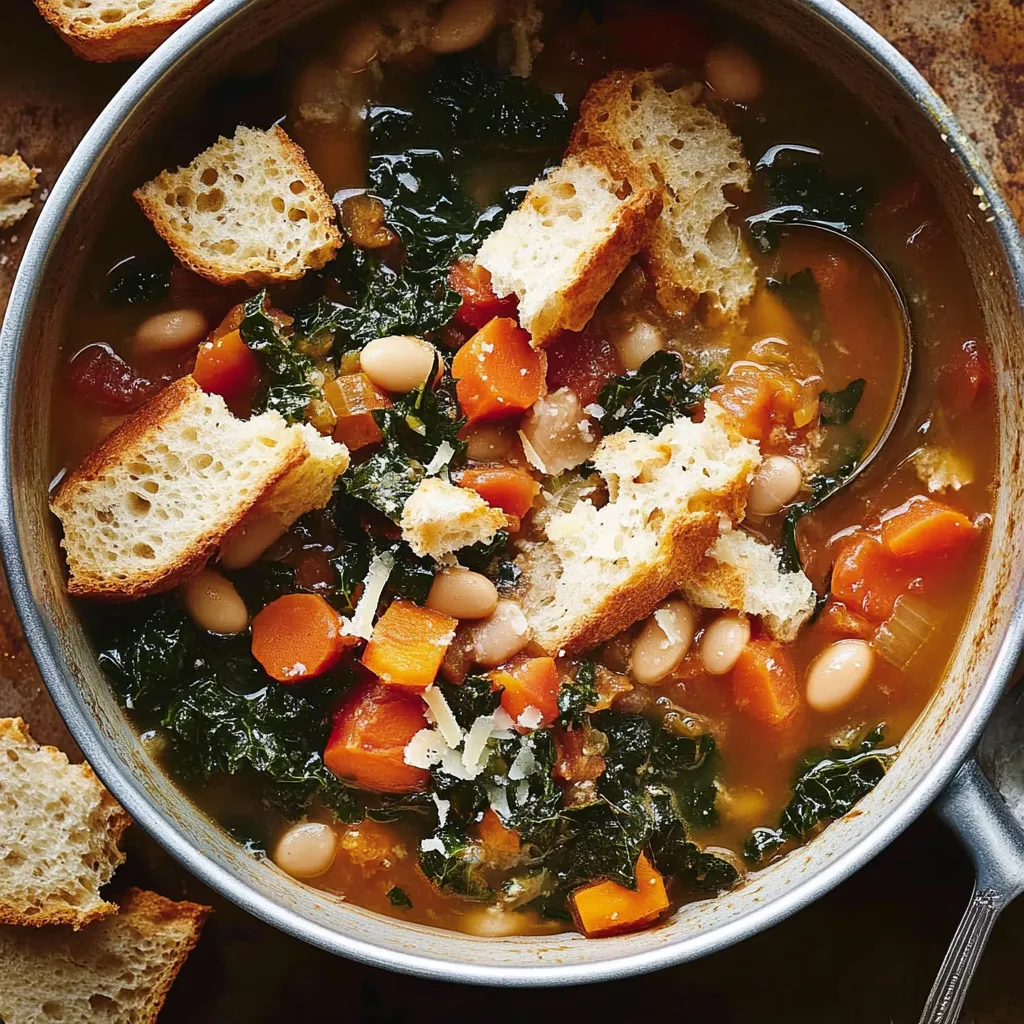 Pin it
Pin it
Ribollita, meaning "reboiled" in Italian, transforms humble ingredients into a hearty, soul-warming soup that perfectly represents Tuscan peasant cooking. This thrifty dish proves that day-old bread and simple vegetables can create something truly extraordinary.
Through studying traditional Tuscan cooking, I've learned that the secret to authentic ribollita lies in the patient building of flavors and the quality of each simple ingredient.
Essential Ingredients
- Day-Old Bread: Crusty country bread or sourdough
- Cannellini Beans: Traditional white beans of Tuscany
- Tuscan Kale: Also known as cavolo nero
- Quality Olive Oil: Use your best for both cooking and finishing
- Fresh Rosemary: Provides essential aromatic notes
- Parmesan Rind: Adds depth to the broth
- Fresh Vegetables: For the soffritto base
- Good White Wine: Adds brightness and acidity
Detailed Instructions
- Bread Preparation (15 minutes):
- Cut bread into 1-inch cubes. Spread on a baking sheet. Toast until completely dry. Let cool completely. Store until needed.
- Creating Soffritto (12-15 minutes):
- Heat olive oil in a heavy-bottomed pot. Add finely diced onion, carrot, and celery. Cook slowly until vegetables soften. Season with salt to help vegetables release moisture. Stir occasionally to prevent browning. Add garlic near the end.
- Building the Base (10 minutes):
- Add rosemary and cook until fragrant. Pour in white wine. Let wine reduce by half. Add tomatoes and their juice. Stir in beans and broth. Add parmesan rind. Bring to a gentle simmer.
- Developing Flavors (20-25 minutes):
- Maintain a steady simmer. Stir occasionally. Let flavors meld. Check beans for tenderness. Add kale and cook until wilted. Remove parmesan rind.
- Final Assembly:
- Add toasted bread gradually. Stir gently to combine. Let bread absorb liquid. Adjust thickness as desired. Check seasoning. Drizzle with best olive oil.
 Pin it
Pin it
The breakthrough moment in perfecting this recipe came from understanding that ribollita should rest after cooking, allowing the bread to fully integrate with the soup.
Professional Chef Tips
- Save parmesan rinds in freezer specifically for soups
- Use olive oil twice: for cooking and finishing
- Cut vegetables uniformly for even cooking
Troubleshooting Common Issues
- If Too Thick: Add hot broth gradually
- If Too Thin: Add more toasted bread
- If Bread Is Mushy: Toast it longer next time
 Pin it
Pin it
Make-Ahead Strategy
- Prepare soup base without bread
- Store bread separately
- Keep kale separate if not serving immediately
Storage Solutions
- Store base soup up to 3 days
- Keep bread at room temperature
- Freeze soup without bread
Variations and Regional Adaptations
- Some regions add pancetta for depth
- Different seasonal greens can be used
- Some versions include potatoes
This Ribollita represents the best of Tuscan cooking philosophy, transforming humble ingredients into something magnificent through patience and technique. Whether served as a light lunch or hearty dinner, it reminds us that great cooking often comes from making the most of what we have. Each bowl tells a story of resourcefulness and tradition that's been passed down through generations of Italian cooks.
 Pin it
Pin it
Frequently Asked Questions
- → Should I use fresh or stale bread?
- Stale bread is traditional, but fresh bread can be dried in the oven for 10-20 minutes.
- → Why add the Parmesan rind?
- The rind adds deep, rich flavor to the broth while simmering.
- → How thick should ribollita be?
- The thickness is adjustable - add more bread for a thicker consistency.
- → Can I substitute the kale?
- Traditional ribollita uses lacinato kale, but other hearty greens can work.
- → What makes this soup authentic?
- Using stale bread as a thickener and including cannellini beans are key traditional elements.
